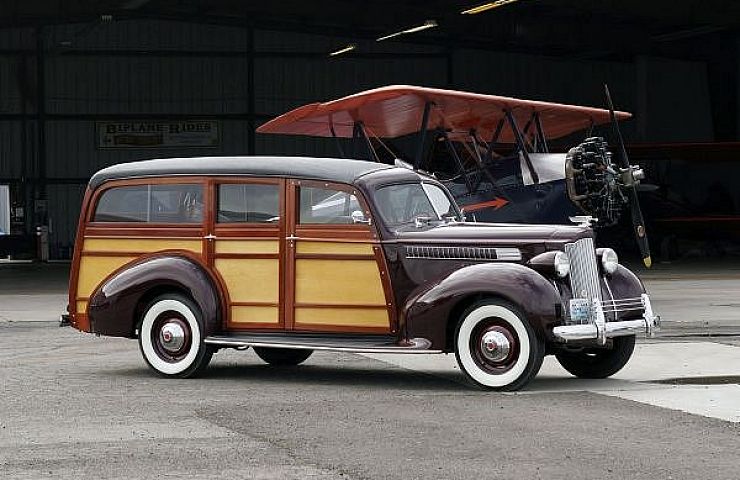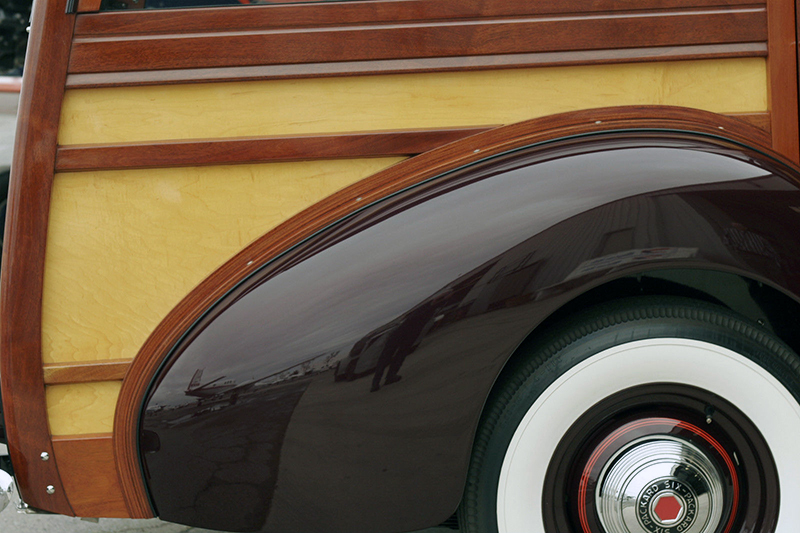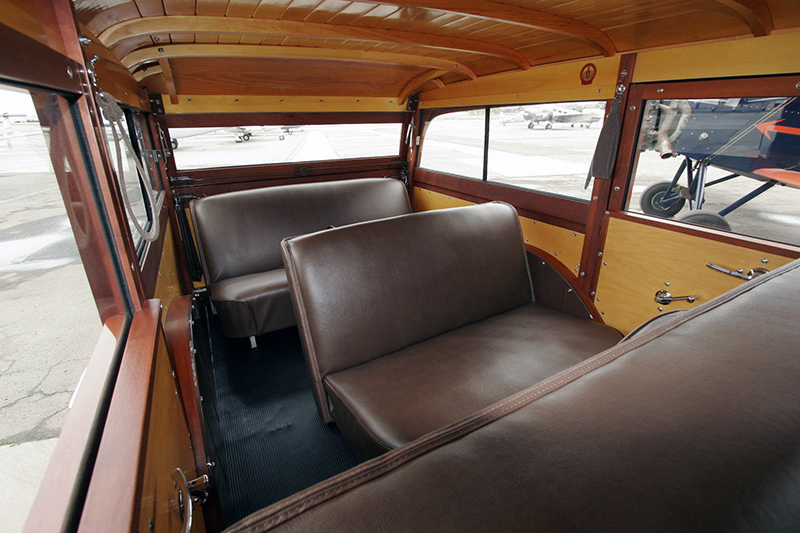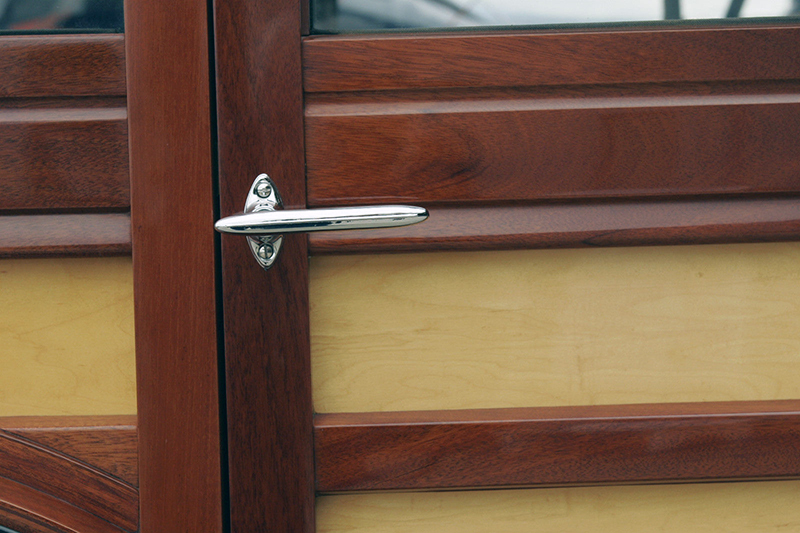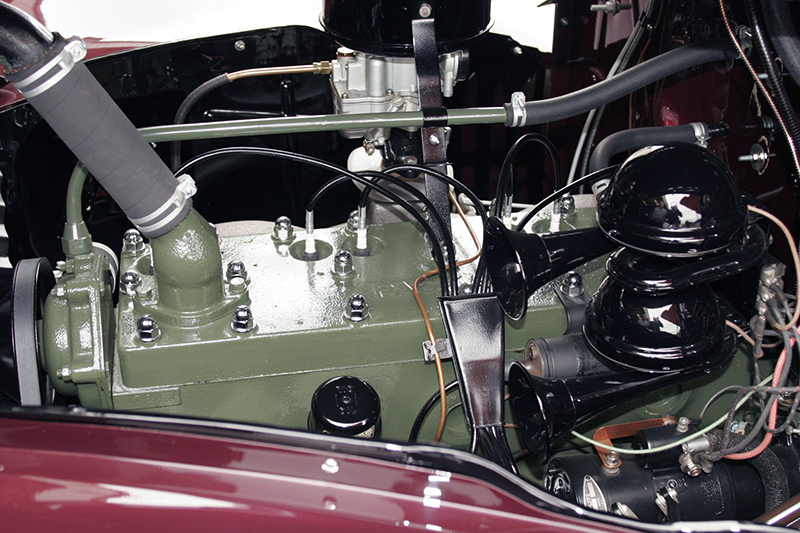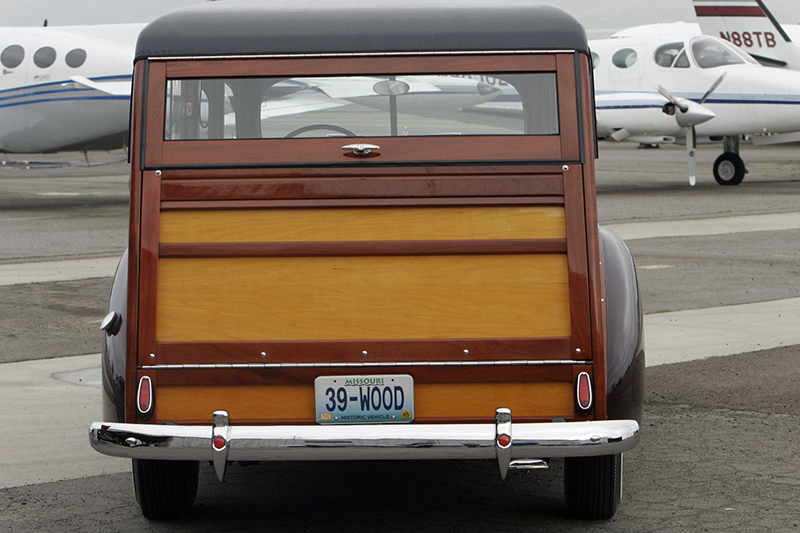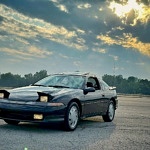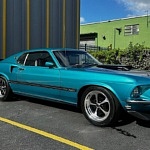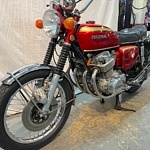Jack Barton’s 1939 Packard Six Wagon, now listed for sale on eBay, is not just another fine luxury automobile from early American automobile history. The Packard Woodie—meticulously restored over nearly five years— is not only gorgeous, but a powerful testament to a time when American coach builders hand-crafted car bodies out of wood.
It’s only fitting that the man who took on the complete restoration of the Packard is the proprietor of a small-town hardware store “Nuts and bolts are what we do,” said Jack Barton, in an interview with eBay Motors. He lives in a Missouri community of about 1,700 people, 70 miles northeast of Kansas City. The job of restoring the Packard wagon—a challenging project that several previous owners of the vehicle had intended to do, but never managed to get started—was more woodworking than mechanical.
The First Station Wagon
The mastery seen in this rolling work of art is traced back to Joseph Cantrell of Huntington, N.Y.—also the son of a small-town shop keeper, in this case a candle maker in the 1880s and 1890s. Cantrell, who also spent his early life as a boat-builder, blacksmith and carriage-maker, had to re-invent himself a few times to keep up with the emerging auto industry. After a decade or so of constructing carriages—including wheels, springs, and upholstery—Cantrell responded to the advent of the Model T by shifting his business to building auto bodies.
In 1915, Cantrell used the chassis of a Model T to create a new carriage design that was more rugged and could handle the loads being hauled by rural clients in New York. He called the design a “depot wagon” because it could carry goods to the train depot. Cantrell’s design is considered the forerunner to the modern station wagon.
By the time the Great Depression hit, Cantrell had established a business customizing carriages for vehicles sold through car dealerships in New York, New Jersey, and Connecticut. Meanwhile, Packard—the manufacturer of luxury automobiles since 1899—needed to make its own pivot after the Depression. By the late 1930s, Packard had introduced a six-cylinder model—dubbed the Packard Six—to shift from the lavish long wheel models of the 1920s to vehicles that were slightly more affordable and practical.
When the 1939 Packard station wagon arrived to the workshops of J. T. Cantrell and Brother, it probably didn’t have much of a body. During those lean times, the work of building the coach would be assigned to a single Cantrell craftsman—more furniture-maker than car-builder. The Packard listed on eBay is reportedly one of five remaining Cantrell-built Packard wagons out of a total of 25 ever made.
What happened to the other 20 units? “Wood weathers,” Barton explained. “The car needed every last thing done. It was completely dilapidated.” He explained that when he acquired the car about 20 years ago, all the wood was in place, but was beyond repair—at least for Barton’s goal of restoring the vehicle to the pristine condition when it first rolled on to streets. “We got the same Honduran Mahogany and duplicated every stick one by one in exact detail,” Barton said. He tapped the late John David Hamlin, an Indiana-based carpenter and craftsman, to re-fabricate the wood body—while he took on all the other work, with a little help on the paint and body work.
Woodies are iconic and cool, but wood rots, gets damp, and can get infested with termites. These threats are what led many old Woodies falling into disrepair and getting picked up for cheap by surfers in the 1950s, who repurposed them into slacker wagons. Barton—who has for decades been visiting the annual classic car swap meet and shows in Hershey, Penn.—had a different idea: to bring back his extraordinary Packard to all its glory. “The art and design of these cars are tremendous,” he said. “Other collectors put their art on the walls. I like my art in my driveway.”
The restoration was no easy feat. “My main concern was the wood,” he said. “The thing about a Cantrell body is it doesn’t have a single straight line on it.” The wood body work alone took three years. The entire project was more than four-and-a-half years. The metal frame was bead-blasted, and finished in Packard’s Loyola Maroon color. All the original Chrome work was professionally re-plated. The interior and upholstery are period correct. “We built it to drive, but finished it to show,” Barton said.
So how does it drive? Barton said the 245 cubic inch Packard Six, with a three-speed transmission, handles great. The sturdy wagon is unfazed by bumps in the road. Packard’s Econo-Drive, introduced in 1939 as a kind of overdrive, is still going strong. Trips down any roadway result in a parade of waves, honks, and thumbs thrust up. “It’s great to see people appreciate the same things you do,” he said.
As Barton prepares to part ways with the 1939 Packard Cantrell Wagon—which has won numerous awards including Best of Show at the 2004 Packard International Club—he’s turning his attention to his next project: the restoration of his 1967 Jaguar E Type.

